
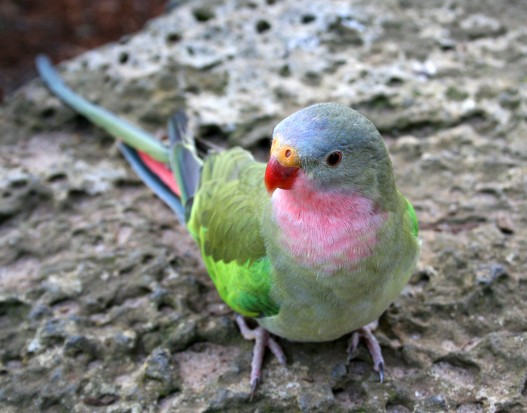
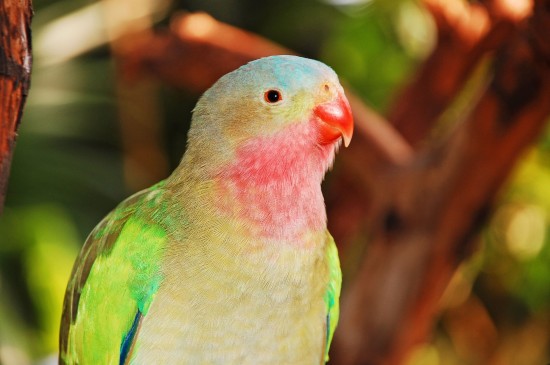
The Princess Parrot (Polytelis alexandrae) is a parrot from Australia that was named in honour of Princess Alexandra of Denmark, who became the bride of Edward VII and Queen of England. Other names for these birds are the Queen Alexandra parrot and the Princess of Wales parakeet.
These are medium sized parrots around 34-46mc in length and weighing around 110-120 grams. Their plumage is mainly green with pink at the throat, a blue crown and bright green feathers on the shoulder. Their rump is blue and the tail feathers are long and narrow, being brighter in colour on the male than the female. The male’s beak is coral-red while the female’s is less colourful while the male’s eyes have an orange iris while the female’s is brown. There are three known captive bred mutations: Lutino, Blue and Albino.
Of all the parakeets in Australia, the Princess is one of the least well known because in its natural habitat, it is very elusive. It lives in the arid woodland and scrub filled with plants such as eucalyptus, spinifex and acacias and live in small groups outside breeding season. They move around an area for food and water and are one of the few parrots who engage in mobbing behaviour – where the group will turn on a predator to chase them away.
While in the wild, these birds tend to live in groups for long period of times, experienced keepers recommend to only keep one pair per enclosure. They can be kept with other peaceful parakeets such as the Grass Parakeet family. If you are keeping them in a cage, it is advisable to keep a pair of birds as they are sociable and do need company.
These birds need plenty of exercise so an aviary can be the best option for them. If they are to live in a cage, the largest possible is best as well as plenty of time outside the cage for exercise purposes. An ideal flight size would be 4 metres by around 1 metre wide. Being very curious birds, when out of their cage they will investigate their environment so parrot-proofing the rooms they will have access to is a good idea.
If you are keeping these birds outside, they are adapted very well to the UK climate and will be contented with an insulated night house to roost in.
While not the noisiest of parakeets, Princess Parrots can make sound and piercing noises, most often when they are frightened but also during breeding season. Mostly, though, they are reasonably quiet, friendly and intelligent birds that if have been hand reared, will bond well with the family.
These birds don’t bathe too often but will appreciate a spray bath with a fine mist of water, particularly on warmer days.
On the health side, these birds can be prone to worms so regular worming is advisable to avoid any problems, usually around every three months. This is because they like to forage on the ground for food and therefore are more susceptible for contracting the parasites.
A seed mixture designed for large parakeets is ideal for these birds among with green food, weeds and fruit and vegetables. They will enjoy egg food on some occasions and grit should always be available.
Pellets are also good to include in the diet to make sure all nutritional elements are covered. When they have chicks, feeding sprouting seed is another good option to help the parents and balance the nutritional elements for the young. This can include mung beans and sunflower seeds.
A wide range of fruit and vegetables can be offered to see what the birds enjoy. Silverbeet, endive, broccoli, sweet potato and beetroot are among those offered as well as normal greens such as spinach, kale, collard greens and carrots. Corn on the cob will often be enjoyed along with fruits such as apples.
Wild weeds are a great treat for these birds though be careful where you source them from – if it is the roadside they may have come into contact with pesticides so can be dangerous. Many people grow their own weeds to the horror of the gardeners because then the origin is certain.
In the wild, Princess Parrots don’t have a set breeding time but are triggered into breeding by the right conditions, usually when there is plenty of food. They will nest in a eucalyptus tree or a desert oak and four to six eggs are laid. Incubation is for around 19 days and they fledge at about 35 days.
In captivity, they are sometimes described as difficult to breed. Firstly they need a nest box around 10 inches square with a height of 20-24 inches and an entrance hole around 4 inches wide. It is best to hang the nest box in the sheltered night house and at as high a point as possible. The female does the incubating with the male bringing her food so she doesn’t have to leave the nest.
When the chicks fledge, they are fed by both parents for around four to five weeks until they can be fully independent. Maturity comes at seven month to a year and a half depending on the bird and breeding should not be allowed until they are at least two years old.
The main reason they can be described as a problem is that hens are prone to breaking eggs if something startles her. For this reason, some breeders are using a specially designed nest box to combat this problem. These boxes contain ladders to allow the birds to climb and down to the eggs then walk to where the eggs are situated. Another option are L-shaped boxes that work in a similar way.
These are intelligent and friendly birds that will easily tame and bond with the whole family, not just one person. They are less noisy than other parakeets and adapt to new homes. For those looking to breed, with a few modifications to the normal set up, this should be relatively straightforward.
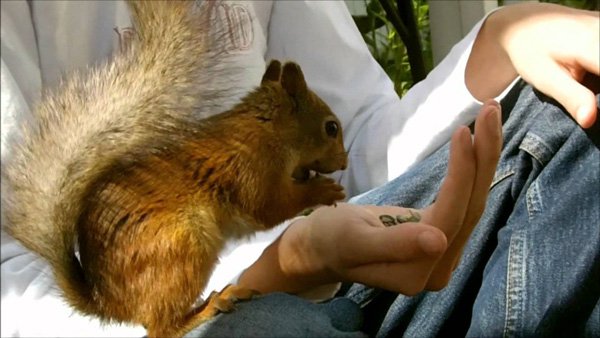 Taking Pet Care Services is a Smart Way to Care for Your Dog
Taking Pet Care Services is a Smart Way to Care for Your Dog
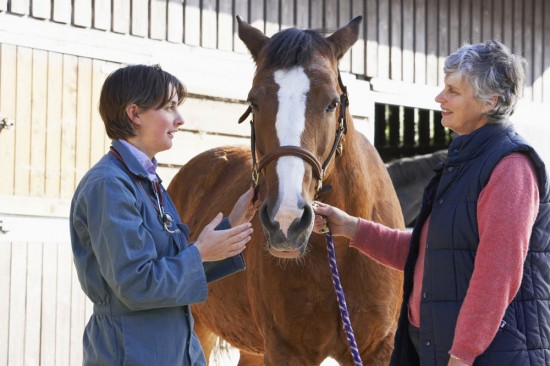 Getting A Horse Or Pony Vetted Prior To Purchase
Getting A Horse Or Pony Vetted Prior To Purchase
 How Dog Breed List Can Help You Make Better Decision?
How Dog Breed List Can Help You Make Better Decision?
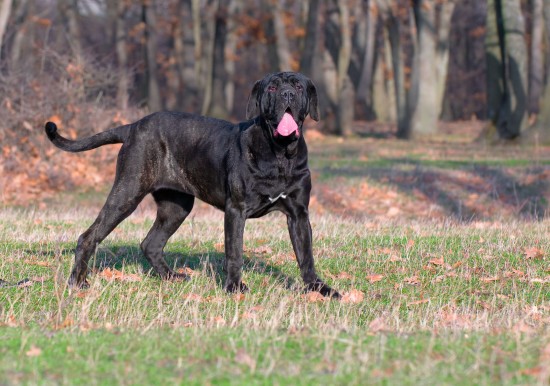 Is The Neapolitan Mastiff Dog A Good Choice Of Pet?
Is The Neapolitan Mastiff Dog A Good Choice Of Pet?
 Keeping Terminology Simple When A Pet Is Diagnosed With Cancer
Keeping Terminology Simple When A Pet Is Diagnosed With Cancer
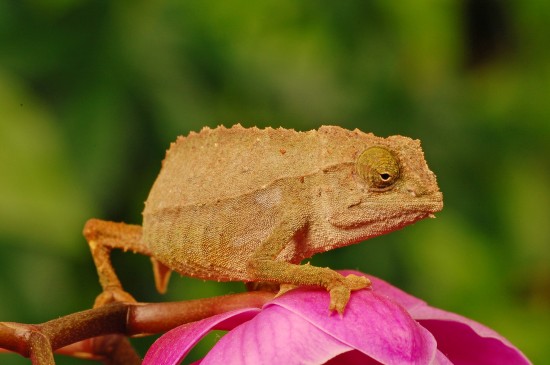 Keeping Pygmy Chameleons As Pets
Keeping Pygmy Chameleons As Pets
Copyright © 2005-2016 Pet Information All Rights Reserved
Contact us: www162date@outlook.com